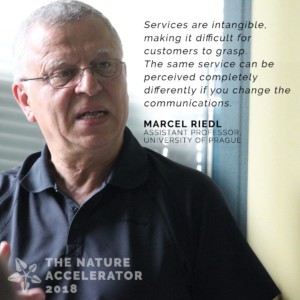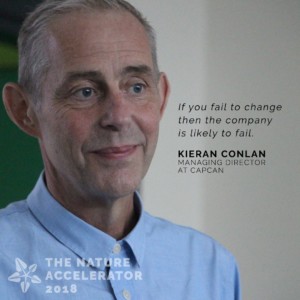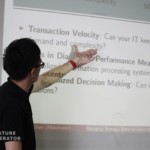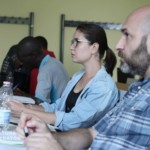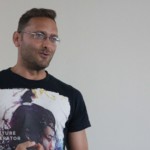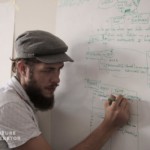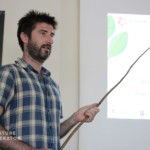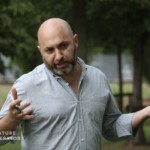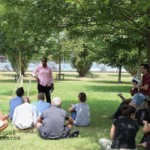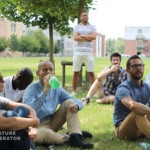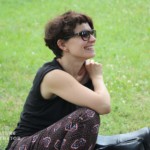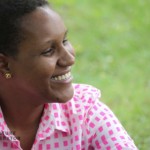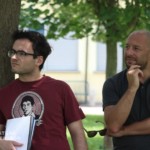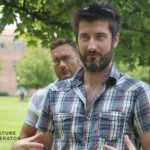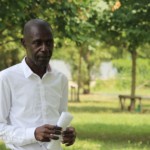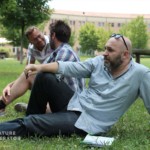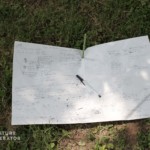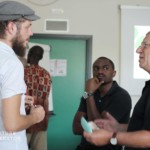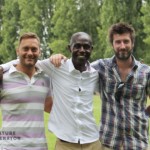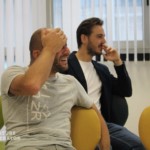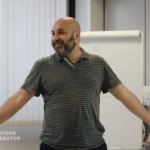Corporate communication
What shape of story do we want the audience to experience?
Without any change in the intensity of emotions or in plot, the stories would be linear. But from whose perspective do we tell a story?
Is it the product that is in the center of it or a specific user? These are all questions we need to answer. If we take the man in the hole example from Luni Libes, we need a person, stuck in a hole (a problem we need to specify), and present the solution to get out of the hole. Different models are available and depending on what the subject, goal, and what the audience’s needs are, we can adjust. What do we think our audience, before our story, thinks, feels, knows and wants? What do we need to set our story up so our audience can properly experience it? How do we pull an A-Ha moment and from that, conclusion? How do we think our audience will think, feel, know and want something after our story? A customer journey can be emotional as cognitive; and to design the journey is about creating the story shapes.
Our experience
From our Etifor team, Colm O’Driscoll and Francesco Pra Levis shared their personal experience and partnered the startups to critically think about their storytelling canvases, dissecting the audiences’ needs and expectations. Alessandro Leonardi stimulated our startups’ imaginations with pitch using storytelling exercise. Marcel Riedl from the the Department of Forestry and Wood Economy, Czech University of Life Sciences Prague, who has been collaborating with Etifor, discussed brand value and the process of brand management as well as communication services using the SERVQUAL model during Natural Bites. Although Marcel is currently in the forestry sector, his background is in mathematics and he brings his interesting mix and perspective to our startups who have had the chance to have mentoring sessions with him.
Our partners : Ron Chan (University of Manchester) & Kieran Conlan
Many may think that risks carry a negative connotation, but Ron Chan, an environmental economist from the University of Manchester, explored how risk and strategic risk mean returns. Measuring internal risk pressures, Ron helped the startups think about how the risks may contribute to growth, culture and information management. Startups may be in the safety, caution and danger zone and through belief and boundary systems manage risks, rather than avoid them.
Kieran Conlan, a serial entrepreneur who has recently sold his company Cascade to Ricardo, and who has also helped develop Nature-Accelerator, joined us this past week. He asked our startups where they think they are going. Will they sell their business after a certain time or will they keep pushing their businesses? Depending on their end goal, they may need different strategies. Often mentors may talk about how to grow startups, but what can startups do in times of crises? Kieran shared how he cooperated with him team to cut costs and find a way to survive and move on when the U.K. too was hit with the 2009 financial crisis.
Our startup’s experience
Alessandra Palentini and Emiliano Vettore of iGreengo say that the pitch exercise using storytelling was fresh. “It is very different from a normal pitch where you pitch about a product or service. Pitching with a story was strange, we had never done it before,” says Alessandra. She found how the ups and the downs, and particularly even the downs can be useful to valorize what they offer. Putting normal people and real situation first rather than products or services.
Wrapping up Week 6 and looking ahead
Our partners and visitors have enriched our Nature-Accelerator program through formal and informal sessions about corporate communication and other expertise. Week 6 was about how to take what we have learned and use it to pitch. Equipped with different communication strategies and tools, all that leaves our startups is time to practice and practice before the big demo day in less than two weeks.
FIND OUT MORE
WEEK 1 ARTICLE: Why do we hack startup business model?
WEEK 2 ARTICLE: How do we analyze a startup market?
WEEK 3 ARTICLE: How can startups use ‘corporate culture’ to innovate and embrace disruption?
WEEK 4 ARTICLE: How can startups keep customers loyal?
WEEK 5 ARTICLE: Why should startups learn the language of financial planning and accounting?
Developed by ECOSTAR and powered by Fledge, the Nature-Accelerator is an intensive eight week acceleration programme for nature-based startups. As part of ECOSTAR initiative, Etifor Srl and the University of Padova, promote and manage the acceleration programme.



